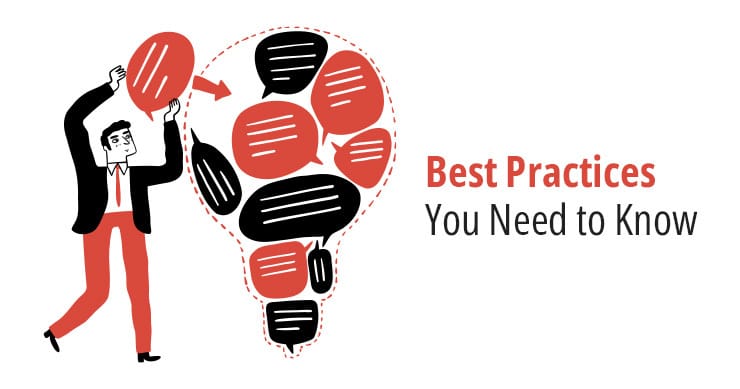Risk management has become necessary for organizations worldwide, regardless of industry or size. Vendor risk management, often referred to as third-party risk management (TPRM), is an aspect of your overall risk management program that should not be overlooked.
Studies show that 45% of organizations have had a third-party security incident in the last year. Yet, alarmingly, 23% take a passive approach to these incidents and 8% of organizations lack processes to respond to them. These stats illustrate that 31% of organizations are allowing unnecessary risks to threaten their companies.
Vendor cyber security risk management is not a ‘nice-to-have’ — it should be considered a requirement. Due to widespread digital transformation, your vendors, partners, and suppliers have more access to your data and systems than ever. Therefore, you need to protect these assets from threats with a robust vendor information security risk management program.
An ideal program correctly assesses the threats a vendor poses to your organization, allowing you and decision-makers to determine if working with them is worth the risk.
It’s time to learn best practices for creating and operating an effective vendor risk management program. Read on to learn how to create a third-party risk management program that protects your assets and ensures compliance.

Begin by Creating a Vendor Security Risk Management Program
We learned earlier that too many companies completely lack effective vendor risk management, either because of a deficient or underdeveloped security program. Therefore, creating a comprehensive vendor risk management program is the first line of defense against vendor risks.
Establishing a vendor risk management can be a complex subject, but we’ll provide a brief overview of the process to get you started:
- Develop governance documents: Begin the process by developing one or more documents that outline the high-level guidance of what your vendor risk management program must cover. Reference relevant frameworks and regulations applicable to your industry.
- Craft a thorough vendor selection process: Have a documented vetting process for selecting vendors, including issuing a request for proposal (RFP), vendor comparisons, and completing a vendor assessment questionnaire.
- Have clear contractual risk management standards: Both parties should clearly communicate expectations regarding cyber security and other risk-mitigating measures. These expectations should be included in the final contract.
- Perform routine due diligence and ongoing risk assessments: A vendor’s tech stack may change, its risk management policies may be updated, and they may onboard new vendors of their own (fourth-party vendors). Therefore, you should routinely conduct risk assessments to ensure the accuracy of their risk score.
- Create a defined internal audit process: Your risk and compliance teams should have a documented process for auditing, assessing, and scoring all third parties, both before onboarding and throughout the relationship.
- Define a thorough reporting process: Senior leadership, the board of directors, and other stakeholders will benefit from consistent and accurate reporting. These reports should allow them to make informed decisions and understand the vendor risk environment.
Start Getting Value With
Centraleyes for Free
See for yourself how the Centraleyes platform exceeds anything an old GRC
system does and eliminates the need for manual processes and spreadsheets
to give you immediate value and run a full risk assessment in less than 30 days
Best Practices for Managing Vendor Security Risk
Now that you understand how to create a vendor risk program, the following best practices will further enhance it.
Quantify Risks by Assessing Potential Impacts of Vendors
Vendor risk management cyber security should include quantifying and scoring the risks introduced by a vendor. Your vendor risk assessment process should mirror your own internal risk assessment program. The main difference is the vendor’s systems and assets that interact with your assets are now the focus.
You should understand specific risks facing these assets and what the vendor is doing to mitigate those risks. You can then quantify the potential impact of a risk occurring, either by establishing a scoring system or focusing on the financial impact of the given risk.
Send Effective Vendor Security Questionnaires
A critical component of evaluating a new vendor is sending vendor security questionnaires. Ideally, their responses will give you all of the information required to evaluate their overall security posture, assign scores, and understand the financial impact of identified risks.
Best practices for vendor security questionnaires include:
- Align questionnaires to a standard based on the vendor’s industry.
- Make questions in simple, plain, straightforward English.
- Add content and guidance when necessary so vendors know what information to provide.
- Utilize a scalable program for managing questionnaires and responses; otherwise, your program can grow out of control.
- Finally, consider your compliance needs and regulatory requirements related to the vendor’s role with your company.
Require Self-Attestation or Third-Party Validation
For the questionnaire and onboarding process, you’ll need documentation and evidence from third parties. In addition, important information should have defined requirements to guarantee its authenticity.
Cyber security vendor management requires accurate information. Otherwise, all other attempts will be ineffective since they’re based on inaccurate information. Self-attestation from an executive or third-party validation will help ensure the information you receive is accurate. Third-party validation includes results from a recent audit, compliance certification, or evidence satisfying regulatory requirements.
Leverage Scanning Tools for Darknet and Public Exposure
Data breaches often end up on darknet sites or are exposed to the public. Has your potential vendor had a previous breach that resulted in sensitive data becoming publicly available?
External tools exist specifically to scan darknet sites to determine if sensitive data is already publicly available. Most of these tools will also scan clearnet sites that post sensitive data.
Leverage these tools as part of your due diligence process on a given vendor, both at the beginning of the relationship and on a continuous basis.
Include Vendors in Your Incident Response Program
How will your security and compliance team react if a vendor has a security incident? Your incident response plan typically focuses on how you react to internal incidents, but it should also cover incidents that stem from your vendors.
Create vendor incident response processes that guide security teams should a vendor incident occur. If you’ve sent an effective questionnaire and conducted accurate risk assessments, you should be aware of likely risks facing your vendors. Craft specific processes that cover likely scenarios so security teams know how to respond, communicate, and minimize the impact of the incident.
Use a Powerful Platform for Vendor Security Risk Management
Vendor security risk management is just as important as managing your own internal risks. The above best practices will help you ensure that your vendor risk management program is well-documented, based on accurate data, and plans for vendor incidents.
Thankfully, you don’t have to start from scratch, handle calculations manually, and pour through compliance documentation with every vendor. Centraleyes is an integrated and centralized risk management platform that simplifies vendor risk management without sacrificing accuracy or effectiveness.
Ready to see how Centraleyes can make your life easier and company safer? Contact our risk management experts today to see Centraleyes in action.
Start Getting Value With
Centraleyes for Free
See for yourself how the Centraleyes platform exceeds anything an old GRC
system does and eliminates the need for manual processes and spreadsheets
to give you immediate value and run a full risk assessment in less than 30 days





